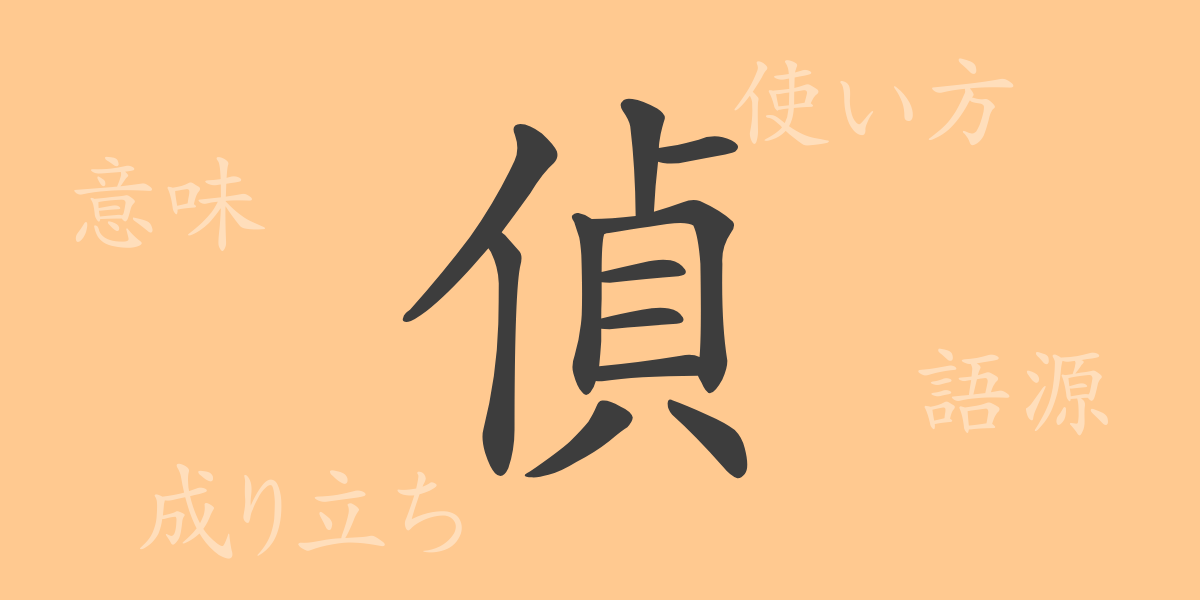Each Japanese character carries its unique history and meaning. ‘偵(テイ)’ is no exception. In this article, we delve into the complex origins, usage, and role of ‘偵’ in contemporary Japanese. Although it might rarely appear in everyday life, ‘偵’ has an intriguing background. Let us guide you through the world of ‘偵’.
Origins of ‘偵(テイ)’
The kanji ‘偵’ was formed in ancient China, deriving from ‘側(そく)’. Originally, ‘側’ meant ‘side’ or ‘beside.’ From there, ‘偵’, used for scouting or searching, evolved. Historically, it has been used to describe observing someone’s actions secretly and gathering information.
Meaning and Usage of ‘偵(テイ)’
‘偵’ is primarily used in words like ‘偵察(ていさつ)’ and ‘探偵(たんてい)’, referring to the act of gathering information covertly or the person who performs such acts. Especially in police and military contexts, ‘偵’ plays a crucial role symbolizing undercover operations and investigations.
Readings, Stroke Count, and Radical of ‘偵(テイ)’
The kanji ‘偵’ has distinct features in terms of its readings, stroke count, and radical:
- Readings: On’yomi (Sino-Japanese reading) is ‘テイ’. There are no commonly used kun’yomi (native Japanese readings).
- Stroke Count: ‘偵’ consists of 11 strokes.
- Radical: The radical is ‘人偏(ひとえ)’ indicating the human or person aspect.
Phrases, Idioms, and Proverbs Using ‘偵(テイ)’
Idioms and phrases containing ‘偵’ often reflect its nature of probing or investigating. Here are some examples:
- 偵察(ていさつ): Secretly investigating enemy positions or terrain.
- 探偵(たんてい): A detective who unravels the truths behind incidents or accidents.
- 偵查(ていさ): An investigation to ascertain facts in a legal context.
Conclusion on ‘偵(テイ)’
Although not frequently used in everyday language, ‘偵’ serves an important function in specific fields. Often seen in detective novels and police dramas, ‘偵’ emphasizes the significance of gathering information and uncovering truths. Through this article, we hope you have gained insight into the unique world and applications of ‘偵’.

























